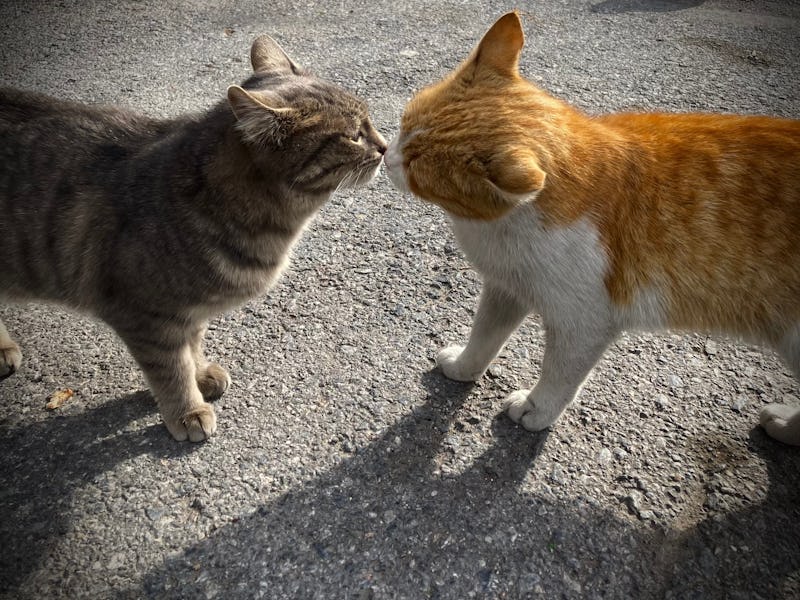This Ingenious Trick Could Help Your Solitary Cat Adapt to a New Pet
Take things slow.

What’s better than a cat? Two cats, of course! Another great answer: a cat and a dog. While adding a second animal to your growing family can be wonderful, the transition process for the solo kitty can be rough. But, as an animal behavior expert explains, there are ways to ease the transition.
Cats are naturally solitary, territorial creatures who love to be in control of their environment. A new housemate can throw a wrench in all those tendencies. Accounting for both pets’ temperaments is crucial, Laura Watson, a veterinary nurse (which is the U.K.-equivalent to a veterinary tech in the U.S.) in Staffordshire, West Midlands, England, and a cat welfare assistant at the feline welfare organization International Cat Care, which is based in Tisbury, Wiltshire, England. “If they're quite a shy or timid cat, the worst thing we could do is bring in this big bouncy Labrador that's in its face,” Watson tells Inverse. Likewise, a playful kitten might not mix well with a senior cat. Not only could the frenetic, rambunctious kitten make an aged cat physically uncomfortable, but the older cat might swipe or growl in defense.
There are some advantages with puppies, Watson says. “You can mold that puppy,” she says, because “you’re still in that socialization period.” On the other hand, if you’re adopting an adult dog, you want to know that they already have positive associations with cats.
Swapping scents
Once you’ve committed to a new friend, Watson recommends trying a technique called scent swapping. Bring a cloth the next time you visit your soon-to-be pet, and rub the cloth all over it. Then, bring the now-scented cloth home and put it near either your cat’s treats, food, or favorite toys. Associating the smell of a new animal with something positive will help your cat acclimate to its new buddy. Watson says that if there’s an initial negative reaction, keep trying.
When it comes time for the actual introduction, there’s no need to rush. “I think the best thing to keep in mind is it needs to be done slowly,” she says. If you have a room in your home that your cat uses less often, that can be a good starting place for your new friend. Just make sure that all your cat’s essentials, like its food, bed, and litter box, are outside that room. Otherwise, use the bathroom — but make sure to put your first cat’s litter box somewhere accessible.
Crates can also be good starting points with dogs. “Sometimes people have a negative association with a crate for dogs, because they think it's been locked in a cage,” Watson says. “But actually, it’s like a safe place for a dog.” Introducing a dog to your cat while the dog is on a leash can also impose a degree of control.
Timing is everything
For the first meeting, wait until your new pet is relaxed. If your new cat initiates interactions with you or rubs up against your legs, that’s a good sign. “We don’t want to start any introductions until the new cat is completely settled or calm,” Watson says.
At this point, let it into a contained, shared space like the bathroom where they can experience the other cat’s scents more prominently. You can let your first cat into the room where the new cat just was to also become acquainted with its scent.
“If they're showing any negative response to the smell of each other, we keep doing that until there's no negative response,” Watson says. If your pets aren’t taking to each other’s scents, go back a few steps. “There's no harm in going right back to the beginning and starting again.”
With dogs, a gate can also be useful in letting the cat get to know their new sibling while also having a space of their own.
Sometimes two cats are irreconcilable. In that case, Watson says the kindest thing might be to rehome the new cat. “There's no shame in having to rehome a cat,” she emphasizes. While pet parents may feel like they must stick out their decisions, Watson knows that’s not always true. She recalls a situation where rehoming the new cat was indeed the best possible outcome because it preferred living on its own, making everyone happier.
The most important thing is to let your pets go at their own pace. Before long, you’ll forget they were ever strangers.